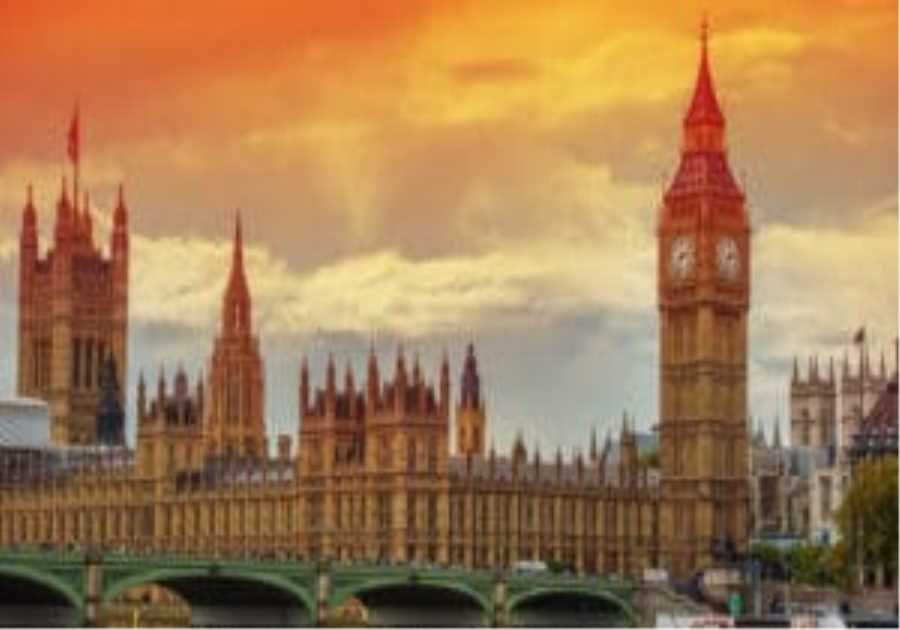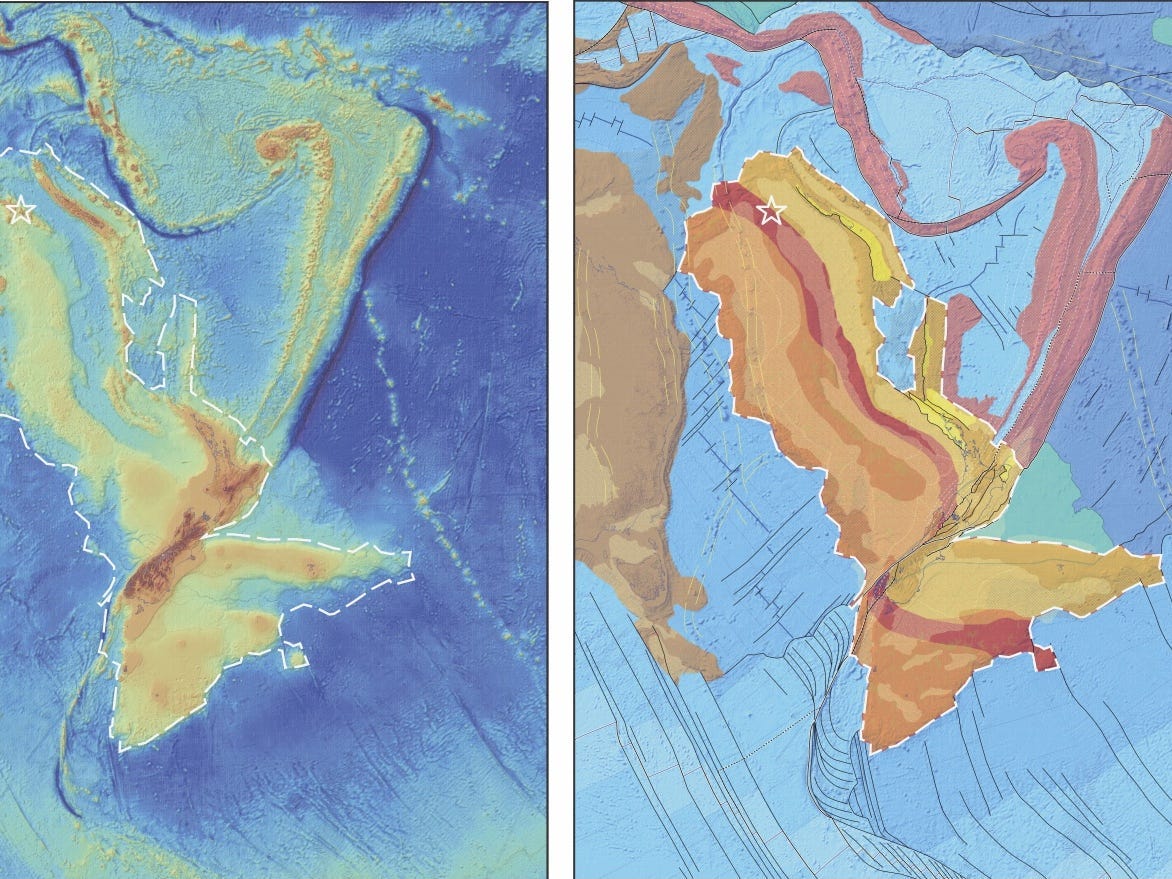
Nick Mortimer/GNS Science
- Zealandia broke apart from the supercontinent Gondwana millions of years ago then sank.
- It's hard to study an underwater landmass, but researchers say they've created a complete map.
- Studying Zealandia's geology helps scientists understand how and why supercontinents break up.
After decades of work, a team of scientists has finally completed a map of Zealandia. It's helping them unlock the secrets of this lost continent's mysterious past.
Zealandia is sometimes called Earth's eighth continent. It stretches over 1.9 million square miles — about half the size of Australia.
But it was hidden, lost for millennia, because 95% of it is underwater. That makes it extremely difficult to map since most of its volcanoes, valleys, rifts, and mountains lie at the bottom of the ocean near New Zealand.
But that didn't deter scientist Nick Mortimer, who led the team that's been studying Zealandia for over 20 years.
In a new study, the team finished mapping the final piece of the continent, the northeast corner.
Combined with their data from years of research, they've mapped the continent's surface features like plateaus and ridges. As well as the boundary where the continent and ocean usually meet — a feature that's largely unknown for other continents, because it's not typically studied, Mortimer said.
As a result, the scientists believe they've mapped Zealandia more thoroughly than any other continent on Earth.
"As far as we're aware, this is a world first," Mortimer, a geologist with GNS Science who led the study, told Insider.
Decades of work establish Zealandia as a continent
Some have argued Zealandia isn't a continent because so much of it lies below the water. Others consider it a continental fragment or microcontinent.
For geologists, like Mortimer, the definition of a continent doesn't necessarily have to do with sea level.
In addition to a continent's large size and defined boundaries between land and sea, another important factor is the continental crust.
A continent typically has a thicker crust and is geologically much more varied — with granites, schists, limestones, and quartzites — compared to the sea floor.
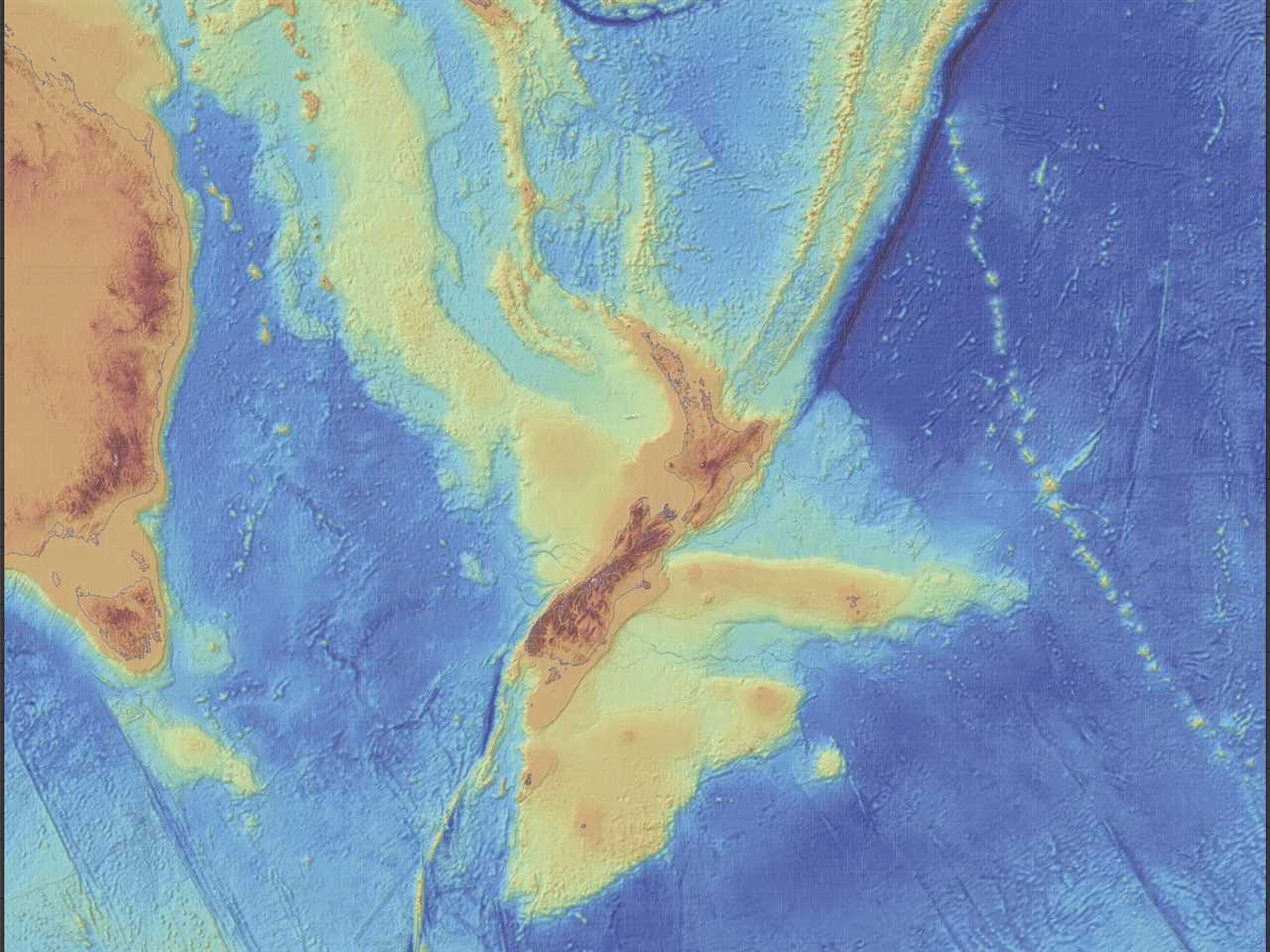
Nick Mortimer/GNS Science
It took a large international collaboration and a combination of satellite, radar, and rock data to understand Zealandia's geology.
By 2019, the team had mapped the boundaries of South Zealandia. Based on years of research and accumulating evidence, the team felt they could finally "pronounce Zealandia as a continent, albeit one that is a lot more hidden than other ones" Mortimer said.
But the researchers also wanted to know how Zealandia looks, from its volcanoes and ridges to its basement geology — the oldest crust that serves as its foundation.
Geologically mapping Zealandia
Their latest paper, published in the peer-reviewed journal "Tectonics" on September 12, fills in the maps' geological gaps in the northeast section, the last piece of the puzzle.
The researchers gathered and dated basalt and sandstone rocks from the seabed of the Fairway Ridge area of Zealandia, located in the Coral Sea to the northwest of New Caledonia. They ranged between about 36 and 128 million years old.
By gathering rock samples then plotting where they lay on Zealandia, the team could get a sense of what geological forces, like volcano formation and sinking crusts, were happening and when.
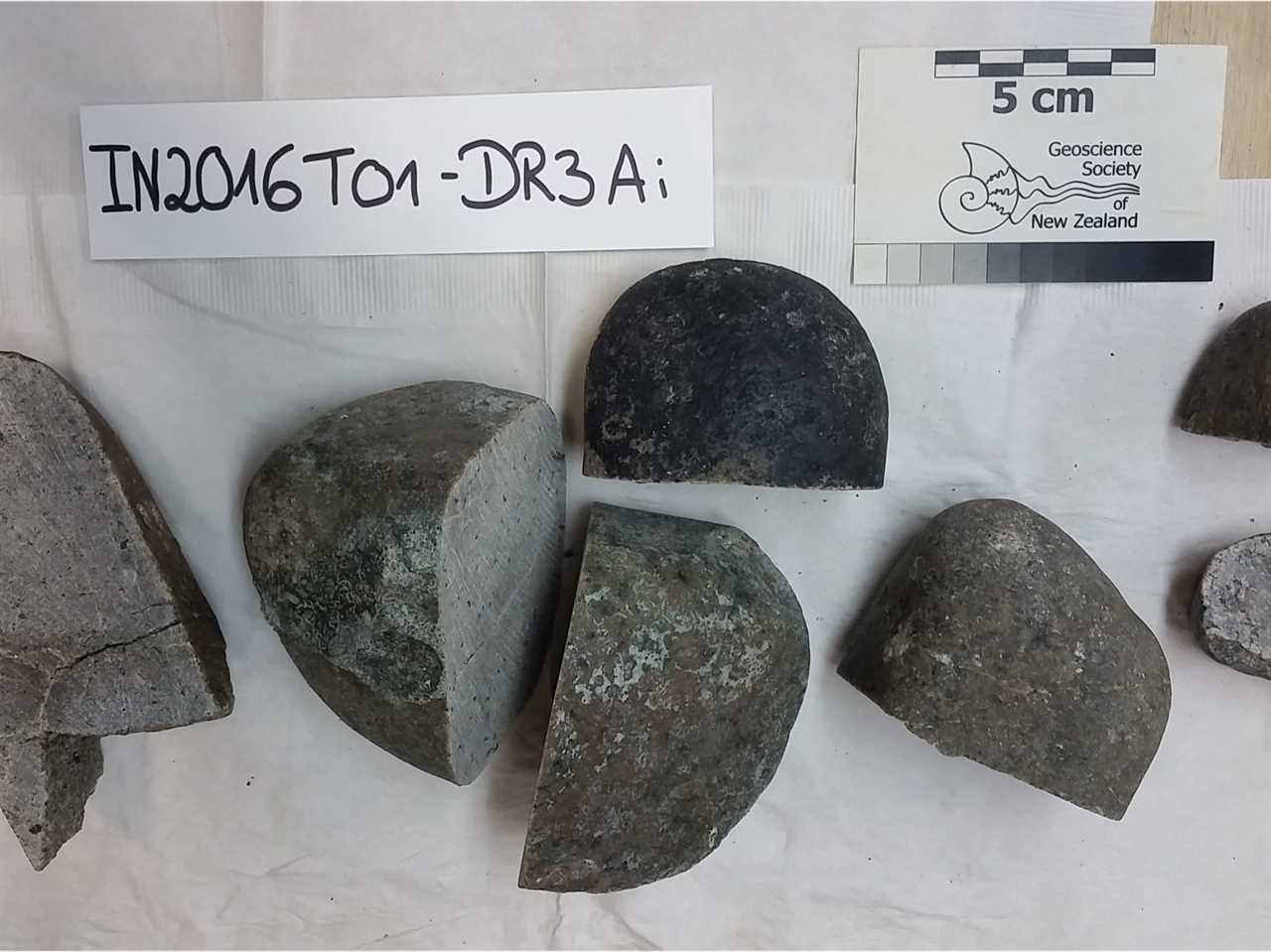
Nick Mortimer/GNS Science
From left to right, the paper's bathymetric map shows Zealandia's basement geology getting progressively younger, from the Paleozoic to the Permian-Mesozoic eras.
The data helps geologists understand what happened when Zealandia broke off from a bigger landmass.
Zealandia is likely Antarctica's cousin
Mortimer calls Zealandia an extra piece of the supercontinent Gondwana puzzle.
For a long time, geologists have known Gondwana was a landmass containing what's now Antarctica, Australia, South America, Africa, and India. It began to break up during the Late Jurassic period, about 160 million years ago.
Zealandia's basement geology gave clues about where it fit into the supercontinent alongside Australia and Antarctica.
That included finding where granite once met granite and records of reversals in the Earth's magnetic field. "We can get some very satisfying geological matches across these continents before the supercontinent broke up," said Mortimer.
Under its ice, much of West Antarctica is submerged underwater, Mortimer said. Around 100 million years ago, the two nested together in Gondwana. "Both of those parts were stretched, a lot like pizza dough, pulled out and stretched," Mortimer said. "They got wider, but they got thinner."
As the crust cooled and thinned, Zealandia started to subside below the water and continued sinking until about 25 million years ago. Meanwhile, crustal uplift created mountains and islands, though New Zealand may never have been fully submerged.
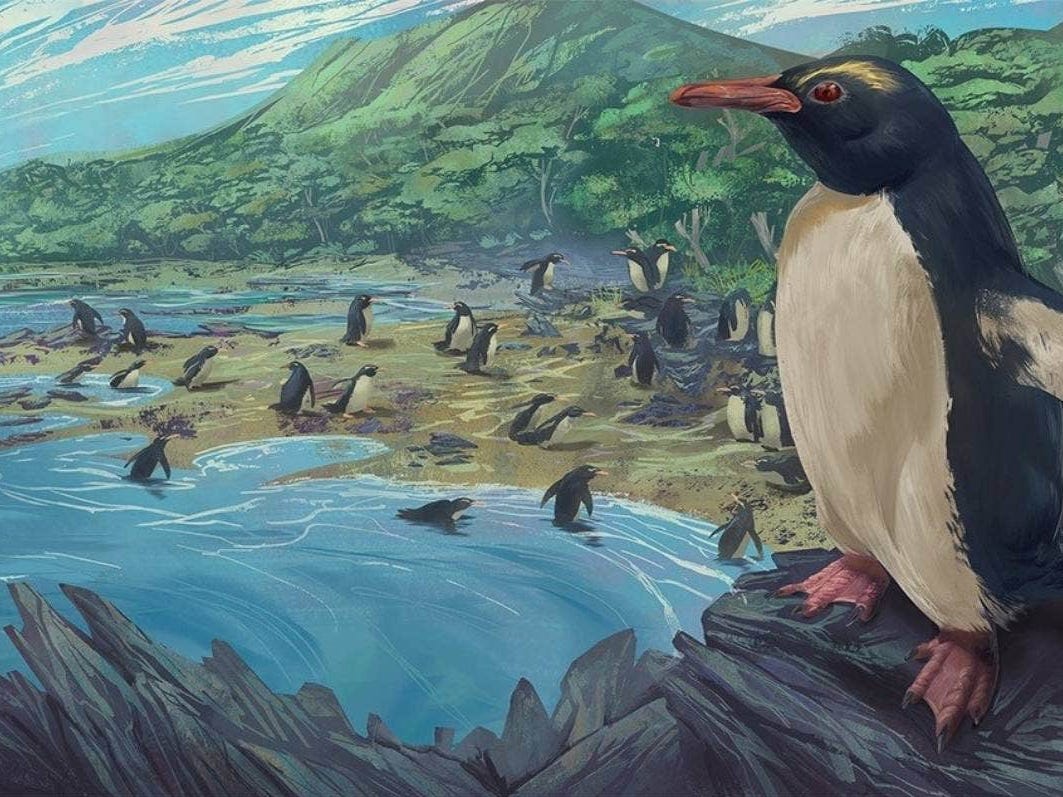
Simone Giovanardi/Massey University
"Adding Zealandia into the data mix is bound to give us some insights into why supercontinents break up," Mortimer said. It also provides biologists with important information about the plants and animals — like ancient penguins — that lived on Zealandia.
The answers to that question and many others remain unsolved, Mortimer said. But now that geologists have a basic idea of the outline of Zealandia and its geology, they can shape their research projects and questions in a much more informed way to answer the whens, the hows, and the whys.
Read More
By: [email protected] (Jenny McGrath,Marianne Guenot)
Title: Scientists finally finished mapping Earth's 8th continent Zealandia, helping them solve the lost continent's mysterious history
Sourced From: www.businessinsider.com/zealandia-geology-map-lost-eighth-continent-sunken-underwater-2023-9
Published Date: Sat, 30 Sep 2023 10:33:01 +0000
.png)





